We are being rapidly transitioned into a new system of centralised, authoritarian global governance. This system is designed to be a technocracy, and, as such, it is truly totalitarian.
Totalitarianism is a form of government that attempts to assert total control over the lives of its citizens. It is characterized by strong central rule that attempts to control and direct all aspects of citizens’ lives through coercion and repression. It does not permit individual freedom. Traditional social institutions and organizations are discouraged and suppressed. As a result, citizens succumb to being merged into a single unified movement. Totalitarian states typically pursue a special goal to the exclusion of all other goals. They direct all resources toward the attainment of that goal, regardless of the cost.
In the case of today’s totalitarian system, technocracy, that “special” goal is called “sustainable development.” In the pursuit of that goal, no cost, either financial or humanitarian, is too great.
Technocrats insist that sustainable development is the way we can successfully tackle the alleged “climate crisis” facing our planet. In reality, their charge that humans are causing climate change is simply an excuse for implementing sustainable development. It is through the technocrats’ global policy commitment to 17 Sustainable Development Goals (SDGs) that technocracy is being installed.
A technocratic society is referred to as a “Technate.” In this two-part article, we will explore the world’s first Technate: China. We will look at how this system was constructed in China, who was behind it, and why technocracy is now being foisted upon all of humanity.
Global Technocratic Governance
In order for technocrats to roll out their vision of a global technocracy, they need to be in control of everything at the global level. In other words, authority has to be consolidated and centralized at the top of the pyramid of power. To achieve this goal, most of the world’s governments and intergovernmental organisations and multinational corporations have collaborated to form a global public-private partnership (G3P).
The G3P network has been knit together throughout the 20th and 21st centuries for the purpose of constructing a single system of global governance. For it is only through global governance that technocrats can distribute their influence worldwide. They count on the top government officials of each nation-state to convert their 17 SDGs into national policy commitments.
Many components of global technocratic governance have already been established.
For instance:
— The World Health Organisation (WHO) now delivers global governance of public health.
— The World Intellectual Property Organization (WIPO) metes out global access to technological development.
— The Organisation for Economic Co-operation and Development (OECD) coordinates economic policies between nation-states.
— The World Trade Organisation (WTO) monitors and controls global trade through the international agreements it oversees.
— The Bank For International Settlements (BIS) coordinates global monetary policy and the flow of capital.
— The United Nations Educational, Scientific and Cultural Organization (UNESCO) steers the direction of education, academia, the sciences and cultural development.
— Other UN bodies are responsible for the seizure of the global commons and the “financialisation” of nature—through natural asset companies and other mechanisms. These goals are nearing completion.
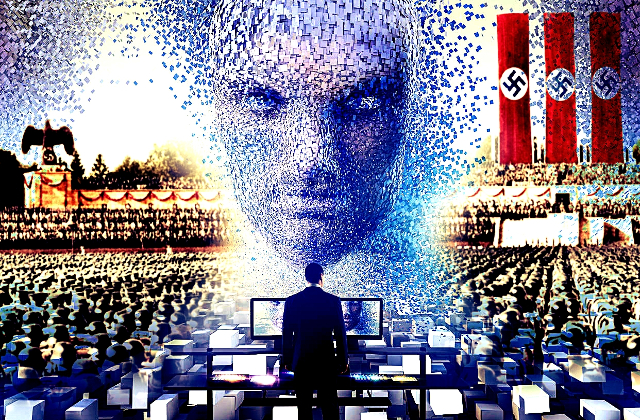
The 17 SDGs are primarily controlled by the UN Development Programme and the UN Environment Programme—UNDP and UNEP, respectively.
Meanwhile, the necessary global scientific consensus on climate change is centrally administered—and the appropriate research funding streams allocated—by the UN’s Intergovernmental Panel on Climate Change (IPCC).
The powerful individuals who are pushing the G3P project forward include a motley crew of mass polluters, robber barons, land grabbers and the world’s leading exponents of worker exploitation, market manipulation, monetary extortion (usury) and oppression. They form what would otherwise be considered a criminal cartel, but they have greenwashed their reputations through their publicly proclaimed commitment to so-called “sustainable development.”
Though often referred to as “the elite,” a more fitting description of this collection of thieves is “the parasite class.”
The G3P has managed to convince billions of citizens around the world that it is committed to sustainable, “net zero” environmentalism and that its foremost desire is to “save the planet.”
In truth, though, the G3P is all about empowering global governance and enforcing technocracy upon humanity through the SDGs and associated policy agendas.
Regardless of what you think about the causes of climate change or the level of risk climate change presents, SDGs do nothing to address it. Rather, they are designed to serve only the G3P partners and their selfish interests.
In order to requisition, commodify, audit and ultimately divide up the Earth’s resources among themselves, the stakeholder capitalists who are at the heart of the G3P also need technocratic control of humans everywhere. Thus, even when the bulk of humanity finally figures out what has happened, technocracy will enable the G3P to shut down all resistance through literal population control.
Under this control, every human being will be individually monitored by Artificial Intelligence (AI) networks that will punish or reward them, depending upon their behaviour.
“How will the G3P get away with taking away human rights worldwide?” you may ask. The justifications for our enslavement have already been set in place: Biosecurity risks and environmental devastation that will result if we don’t obey our global overlords are the two main excuses. We have already seen these two excuses used in the pseudopandemic and the fake climate scare.
Much like the quack pseudo-science of eugenics, which many G3P “thought leaders” seem to believe, Technocracy, Inc., a movement spawned in the early 1900s, was the social science certainty of its day. Although it subsequently faded from public consciousness, technocracy, like eugenics, it is still avidly pursued by the G3P’s hierarchy. Most people don’t recognize technocracy in their lives because it has been purposely compartamentalised—that is, kept out of sight.
Technocracy
In 1911, Frederick Winslow Taylor, who was arguably the world’s first management consultant, published The Principles of Scientific Management.
Taylor’s work came at the culmination of the Progressive Era in the United States. This was a period marked by political activism of the middle class, who sought to address the underlying social problems, as they saw them, of excessive industrialisation, immigration and political corruption. “Taylorism,” fixated on the imminent exhaustion of natural resources and advocating efficient “scientific management systems,” was in the spirit of the age.
Taylor wrote:
In the past the man has been first; in the future the system must be first. [. . .] The best management is a true science, resting upon clearly defined laws, rules, and principles. [. . . ] The fundamental principles of scientific management are applicable to all kinds of human activities, from our simplest individual acts to the work of our great corporations.
Taylorism advocated science-driven efficiency reforms across society. An efficient system should not be run by politicians or religious leaders but by “experts,” such as engineers, scientists, logistical experts, economists and other academics. The focus, according to Taylorism, should always be on systemic efficiency and the proper use of precious resources, including labour.
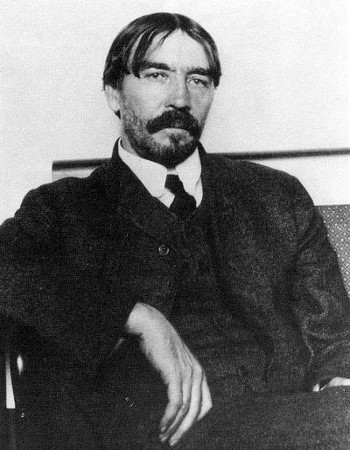
Though Taylor was influenced by Social Darwinism, he was not a eugenicist. However, his ideas were adopted by eugenicists, for they “fitted” with eugenicists’ belief in their unassailable right to rule.
Just as eugenicists—who are inherently technocrats—could optimise and control the human population, so could they employ experts to make socioeconomic and industrial systems more efficient. They could promote these systems as beneficial to “the public good” while at the same time consolidating their own power and reaping a greater financial harvest from a more efficient industrialised society.
Taylor’s principles of scientific management chimed with the theories of economist and sociologist Thorstein Veblen. The latter proposed that economic activity wasn’t just a function of supply and demand, utility, value and so forth, but that economic activity also evolved with society and was thus shaped by psychological, sociological and anthropological influences.
Both Taylor and Veblen focused upon improving the efficiency of industrial and manufacturing processes. But they also recognised that their theories could be extended to the wider social context. Not surprisingly, it was the more expansive application of their ideas that beguiled the parasite class.
Veblen famously spoke of “conspicuous consumption”—a description of how the affluent displayed their social standing through their ability to engage in pursuits and buy items that were essentially purposeless and wasteful. This “conspicuous leisure” and “consumption” cascaded down through the class structure, as those aspiring to signal their own status emulated the wealthy.
He argued that this excess was a major contributor to unacceptable resource waste and inefficiency. A consumer society, he thought, ultimately produced more goods and services than it needed simply to meet the artificial demand created by extravagant social climbers.
In short, Veblen was strongly opposed to this inefficient use of resources, which he blamed on the “business classes” and financiers. Though he valued their contribution to the industrial age, he felt they were no longer capable of managing modern industrial society.
Initially, Veblen argued that the workers must therefore be the architects of the necessary social change that would create economic and industrial reform. Later, in the Engineers and the Price System, he shifted his focus away from workers towards technocratic engineers as the drivers of change.
He called for a thorough analysis of the institutions that maintained social stability. Once that analysis was understood, he opined, those with technological expertise should reform the institutions and thereby engineer society and improve efficiency. Veblen referred to these social change agents as a “soviet of technicians.”
In 1919, Veblen became a co-founder of the John D. Rockefeller-funded private research university in New York called the New School for Social Research. From there he create the Technical Alliance, a fledgling technocratic organisation composed of scientists and engineers—including, notably, Howard Scott.
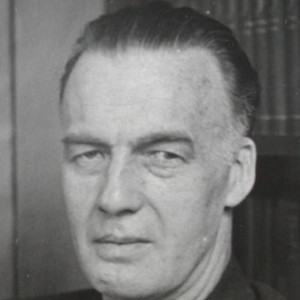
Scott didn’t like Veblen’s description of a “soviet of technicians” and reportedly called it “a cockeyed thing.” He saw that the term’s association with communism wasn’t welcome from a PR perspective and felt it undermined what he was trying to achieve with the technocracy movement.
Veblen’s involvement with the Technical Alliance was relatively brief, and some have suggested that his contribution to technocracy was minimal, accrediting Scott as the great mind behind it. Regardless of the extent of Veblen’s personal involvement in the movement, though, his socioeconomic theories permeate technocracy.
In 1933, the Technical Alliance reformed after an enforced hiatus that was prompted by Scott’s exposure as a fraudster (he had falsified his engineering credentials). The group renamed itself Technocracy Inc.
Despite his public humiliation, Scott was a skilled orator and remained the spokesman for Technocracy Inc. He worked with, among others, M. King Hubbert, who would later become globally renowned for his vague and generally inaccurate “peak oil” theory.
Scott and Hubbert collaborated to write The Technocracy Inc. study course, a formal introduction of technocracy to the world. At the time, their proposals were technologically impossible to achieve, so sounded crazy.
Hubbert wrote:
Technocracy finds that the production and distribution of an abundance of physical wealth on a Continental scale for the use of all Continental citizens can only be accomplished by a Continental technological control, a governance of function, a Technate.
There’s the word used in the opening of this article: Technate.
The Technate, to Hubbert and Scott, was a technocratic society envisaged to encompass the North American continent. It would be administered by a central planning body formed of scientists, engineers and other suitably qualified technocrats. They believed technocracy would require a new monetary system based upon a calculation of the Technate’s total energy usage. People would be allocated an equal share of the corresponding “energy certificates” (as a form of currency) denominated in units of energy (Joule or erg, etc.):
[I]ncome is granted to the public in the form of energy certificates. [. . .] They are issued individually to every adult of the entire population. [. . .] The record of one’s income and its rate of expenditure is kept by the Distribution Sequence, [the envisaged ledger of transactions] [. . .] so that it is a simple matter at any time for the Distribution Sequence to ascertain the state of an unknown customer’s balance. [. . .] Energy Certificates also contain the following additional information about the person to whom issued: whether he has not yet begun his period of service, is now performing service, or is retired [where service to the Technate is rewarded with Energy Certificates] [. . .] sex [that is, gender], [. . .] the geographical area in which he resides, and [. . .] job at which he works.
They envisioned a new price system, with all commodities and goods valued according to the energy cost of their production. Purchases made with “energy certificates” would then be reported back to the appropriate department of the technocratic central planning committee. The transactions would be catalogued and analysed, enabling the central planners to precisely calculate the rolling energy balance—the balance between energy production and consumption—for the entire Technate.
In order for this system to work, all consumers’ energy expenditure (including all daily transactions) would need to be recorded in real time; the national inventory of net energy production and consumption would have to be constantly updated, around the clock; and a registry of every commodity and product needed to be scrupulously maintained, with every individual living in the Technate allocated a personal energy account. This would be updated to record their energy usage and personal net energy balance.
Hubbert and Scott made it clear that, for technocracy to work, an all-pervasive energy surveillance grid would be required. All citizens would be individually identified on the grid and every aspect of their daily lives monitored and controlled by the technocratic central planners.
Technocracy, as we can see, is a totalitarian form of surveillance-based, centralised, authoritarian governance that abolishes national sovereignty and political parties. Freedoms and rights are replaced with a duty to behave in the interest of a common good, as defined by the technocrats. All decisions about production, allocation of resources, technological innovation and economic activity are controlled by a technocracy of experts (Veblen’s “soviet of technicians”).
In 1938, in Technocrat Magazine Vol. 3 No. 4 (to give its technocratic specification), technocracy was described as:
The science of social engineering, the scientific operation of the entire social mechanism to produce and distribute goods and services to the entire population.
For the parasite class and its G3P stakeholder partners, technocracy was obviously an irresistible idea. Technocracy potentially enables the precise engineering of society through the control of resources and energy through the mechanism of a linked, centrally planned and monitored economic and monetary system.
Or, as the Technocracy Inc. Study Course puts it:
The significance of this, from the point of view of knowledge of what is going on in the social system, and of social control, can best be appreciated when one surveys the whole system in perspective. First, one single organization is manning and operating the whole social mechanism. This same organization not only produces but distributes all goods and services. Hence a uniform system of record-keeping exists for the entire social operation, and all records of production and distribution clear to one central headquarters.
To control everything, the only thing that members of the parasite class would need to do is whisper in the ear of a few hand-picked technocrats. There would be no need to corrupt politicians or orchestrate international crises anymore.
While in the 1930s the Technate was an impracticable proposition, it was still something to inspire the G3P and a goal toward which it has been assiduously working.
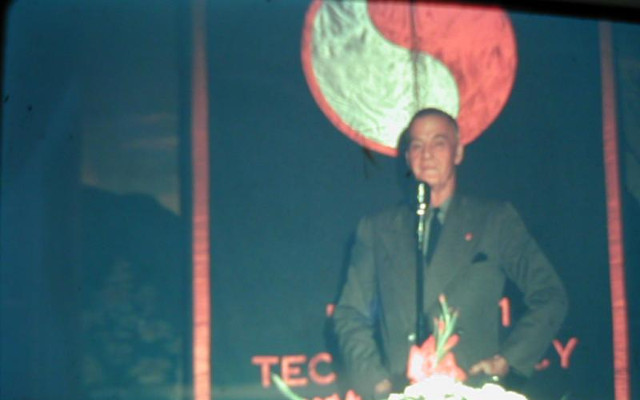
The Technocratic Opportunity
Understanding that technological development would eventually enable the Technate to be realised, in 1970 Professor Zbigniew Brzezinski (1928–2017) wrote Between Two Ages: America’s Role In The Technetronic Era. At the time, Brzezinski was a professor of political science at Columbia University, where Scott had first met Hubbert in 1932. He had already been an advisor to both the Kennedy and Johnson presidential campaigns and would later become National Security Advisor to President Jimmy Carter (1977–1981).
Brzezinski was a significant influence on late-20th-century US foreign policy, far beyond his years in the Carter administration. Though he was the Democrat counterpart to Republican Henry Kissinger, Brzezinski was a centrist whose deep dislike of the Soviet Union often placed him on the right of Kissinger on related issues. He supported the Vietnam War and was instrumental in “Operation Cyclone,” which saw the United States arm, train and equip Islamist extremists in Afghanistan.
He was a member of numerous policy think tanks, including the Council on Foreign Relations, the Center for Strategic and International Studies, and Le Cercle. And he was a regular attendee at the annual parasite class soiree, the Bilderberg conference. In 1973, Brzezinski and David Rockefeller formed the Trilateral Commission, a policy think tank with members from the US, Europe and Japan.
In short, Brzezinski was very much part of the Deep State milieu and the G3P.

Between Two Ages is a geopolitical analysis and practical set of policy recommendations born from Brzezinski’s view that digital technology would transform society, culture, politics and the global balance of political power. It also provides us with a clear view of the mindset of the parasite class.
Brzezinski didn’t reference technocracy directly. Perhaps he was wary of its rather sketchy reputation following Scott’s disgrace. However, he did describe it in detail throughout the book. For example, he wrote:
Technological adaptation would involve the transformation of the bureaucratic dogmatic party into a party of technocrats. Primary emphasis would be on scientific expertise, efficiency, and discipline. [. . .] [T]he party would be composed of scientific experts, trained in the latest techniques, capable of relying on cybernetics and computers for social control.
He theorised about what he called the “Technetronic Age” and offered a vision of the near future from the perspective of the 1970s. He predicted that the “Technetronic Age” would arise out of the Technetronic Revolution—the “Third Revolution” to follow the Industrial Revolution. Klaus Schwab, founder of the World Economic Forum, would later call it the Fourth Industrial Revolution.
Brzezinski also wrote:
The post industrial society is becoming a ‘technetronic’ society: a society that is shaped culturally, psychologically, socially, and economically by the impact of technology and electronics—particularly in the area of computers and communications.
He then went on to describe what he thought life in the Technetronic Age would be like for ordinary men, women and their families. He foretold how political and industrial control would be replaced by psychological control mechanisms, such as the cult of personality, and that these new control mechanisms would steer humans towards behaviour change. Our lives, he predicted, would be managed through computing power and, in the parlance of today, led by science:
Both the growing capacity for the instant calculation of the most complex interactions and the increasing availability of biochemical means of human control augment the potential scope of consciously chosen direction. [. . .] Masses are organized in the industrial society by trade unions and political parties and unified by relatively simple and somewhat ideological programs. [. . .] In the technetronic society the trend seems to be toward aggregating the individual support of millions of unorganized citizens, who are easily within the reach of magnetic and attractive personalities, and effectively exploiting the latest communication techniques to manipulate emotions and control reason.
He also explained how technology would enable extensive behaviour modification and manipulation of the population. He foresaw (suggested) how this modification and manipulation could be weaponised:
It may be possible—and tempting—to exploit for strategic political purposes the fruits of research on the brain and on human behavior. [. . .] [O]ne could develop a system that would seriously impair the brain performance of very large populations in selected regions over an extended period.
Zbigniew Brzezinski wrote enthusiastically, through a paper-thin veil of caution, about how a “global scientific elite” could not only use extreme, all-pervasive propaganda and economic and political manipulation to determine the direction of society but could also exploit technology and behavioural science to genetically alter and brainwash the population.
Describing the form of this society and the potential for technocratic control, he wrote:
Such a society would be dominated by an elite whose claim to political power would rest on allegedly superior scientific know how. Unhindered by the restraints of traditional liberal values, this elite would not hesitate to achieve its political ends by using the latest modern techniques for influencing public behavior and keeping society under close surveillance and control.
He claimed that the “Technetronic Age” he described was inevitable. Therefore, he asserted, the future of the United States (and the planet) must be centrally planned. These planners would eventually displace “the lawyer as the key social legislator and manipulator.”
Brzezinski warned that other nations—he meant the Soviet Union, which he hated—wouldn’t hesitate to embark on this dark social engineering path. Therefore, he urged, US geopolitical strategists needed to be the first to develop this network of planners—aka, technocracy. This would be done, Brzezinski wrote, by fusing government with academia and private corporations: the G3P.
His Between Two Ages made it clear that political parties would become increasingly irrelevant, replaced by regional structures pursuing “urban, professional, and other interests.” These could be used to “provide the focus for political action.” The author understood the potential for this localised, technocratic administrative system:
In the technetronic age the greater availability of means permits the definition of more attainable ends, thus making for a less doctrinaire and a more effective relationship between ‘what is’ and ‘what ought to be.’
He also suggested a redefinition of freedom. Liberty would be achieved through centrally planned public commitment to social and economic equality. The “public good” was thus defined by the technocrats.
The positive potential of the third American revolution lies in its promise to link liberty with equality, according to Brzezinski.
Brzezinski recognised that it would be impossible to impose world government directly. Rather it should be gradually constructed through a system of global governance comprised of treaties, bilateral agreements and intergovernmental organisations:
Though the objective of shaping a community of the developed nations is less ambitious than the goal of world government, it is more attainable. [. . .] It [global governance] attempts to create a new framework for international affairs not by exploiting these divisions [between nation-states] but rather by striving to preserve and create openings for reconciliation.
One “opening” that he was particularly interested in was China. Tensions between Russia and China had continued to rumble on, and, as Brzezinski wrote in Between Two Ages, they had spilled over into a border conflict. He saw that the Sino-Soviet split had created an opportunity to shape China’s modernisation:
In China the Sino Soviet conflict has already accelerated the inescapable Sinification of Chinese communism. That conflict shattered the revolution’s universal perspective and—perhaps even more important— detached Chinese modernization from its commitment to the Soviet model. Hence, whatever happens in the short run, in years to come Chinese development will probably increasingly share the experience of other nations in the process of modernization. This may both dilute the regime’s ideological tenacity and lead to more eclectic experimentation in shaping the Chinese road to modernity.
These ideas were firmly in Brzezinski’s mind when he and committed eugenicist David Rockefeller, whose family had been bankrolling technocratic initiatives for more than 50 years, first convened the Trilateral Commission. The two were eventually joined by other so-called “thought leaders”—namely, population control expert Henry Kissinger, Club of Rome environmentalist Gro Harlem Brundtland, US presidents (Bill Clinton, for one) and Council on Foreign Relations head Richard Haass, who more recently wrote World Order 2.0.
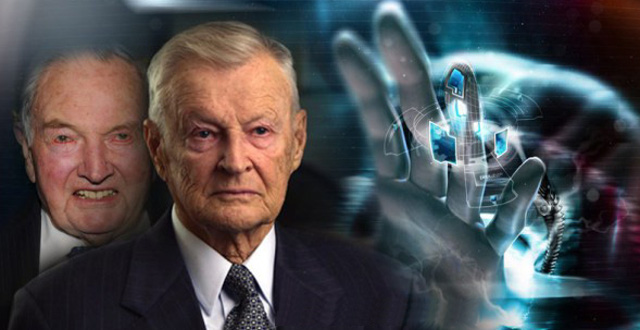
Constructing The Technate In China
Mao Zedong’s “Great Leap Forward” saw 40 million people brutalised and starved to death in just three horrific years (1959–1961). Apologists claim this was all a terrible mistake. But it was nothing of the kind.
In the certain knowledge that food supplies were running out, in 1958 Mao insisted that “to distribute resources evenly will only ruin the Great Leap Forward.” Later the same year, he asserted:
When there is not enough to eat, people starve to death. It is better to let half the people die so that others can eat their fill.
In his zeal to create a communist utopia, Mao presided over a system that seized food from starving millions and exported it to fund his political reforms and support his determination to rapidly industrialise the economy. It wasn’t an error or an unfortunate oversight. While many were so terrified that they submitted fake reports of surpluses that didn’t exist, it is clear that the leadership of the People’s Republic of China (PRC) knew exactly what the human costs were. They just didn’t care.
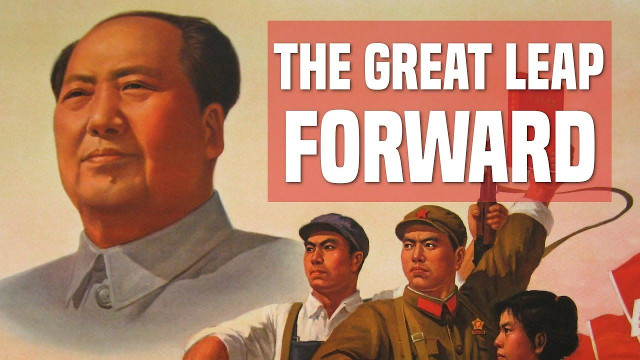
Nor did David Rockefeller, as evidenced by his 1973 op-ed for The New York Times. He and his Chase Group banking empire delegation had visited Maoist China. In his account of the trip, Rockefeller dismissed the mass murder of millions as “whatever.” It was only the product of genocide that Rockefeller was interested in:
One is impressed immediately by the sense of national harmony. [. . .] There is a very real and pervasive dedication to Chairman Mao and Maoist principles. Whatever the price of the Chinese revolution it has obviously succeeded, not only in producing a more efficient administration, but also in fostering. [. . .] a community of purpose.
The Trilateralist Rockefeller could see the opportunity the Chinese dictatorship presented the parasite class. In full agreement with Brzezinski, he wrote:
Too often the true significance and potential of our new relationship with China has been obscured. [. . .] In fact, of course, we are experiencing a much more fundamental phenomenon. [. . .] The Chinese, for their part, are faced with altering a primarily inward focus. [. . .] We, for our part, are faced with the realization that we have largely ignored a country with one-fourth of the world’s population.
The “we” Rockefeller referred to was not us. He meant the G3P and his fellow “stakeholder capitalists” and Trilateralists.
The totalitarian order he saw in China impressed him, as he had hoped it would. Not that Rockefeller was the only Trilateralist to see the technocratic possibilities in China. So did others, naturally, for the sheer scale of the market was an enticing prospect, and the promise of the “Technetronic Age” raised the real potential to build the world’s first Technate.
Completely discounting the appalling loss of human life, Rockefeller wrote:
The social experiment in China under Chairman Mao’s leadership is one of the most important and successful in human history. How extensively China opens up and how the world reacts to the social innovation [. . .] is certain to have a profound impact upon the future of many nations.

The G3P’s task was to crack open the Chinese market while supporting the country’s ongoing totalitarian rule. China would need help with its economic development and technical support to build the technological infrastructure necessary for technocracy to work. This process had already begun, but with Rockefeller, Brzezinski, Kissinger and other Trilateralists committed to the cause, the target of constructing a Technate was firmly in the Trilateral Commission’s sights.
The Trilateralists set about assisting China to develop both economically and technologically, while remaining careful to avoid applying too much pressure for political reform. Totalitarianism was a system they supported and wanted to exploit. In their 1978 Paper No. 15 on East-West Relations, they suggested:
To grant China favourable conditions in economic relations is definitely in the political interest of the West. [. . .] [T]here seems to exist sufficient ways for aiding China in acceptable forms with advanced civilian technology.
In the same paper, the Trilateralists announced that they weren’t entirely averse to helping China modernise its military capability, though they stressed this should be only for defensive purposes.
They accepted that a modern, militarised China might turn to expansionism and seek to regain territory it historically claimed as its own—in particular, Taiwan. They judged this was a reasonable risk to take.
They were playing the great game. Human lives—except their own and the lives of their families, of course—were of no concern.
In Part 2 we will look at how they set about constructing the world’s first Technate in China.
Please note: This research is available in my book – Pseudopandemic

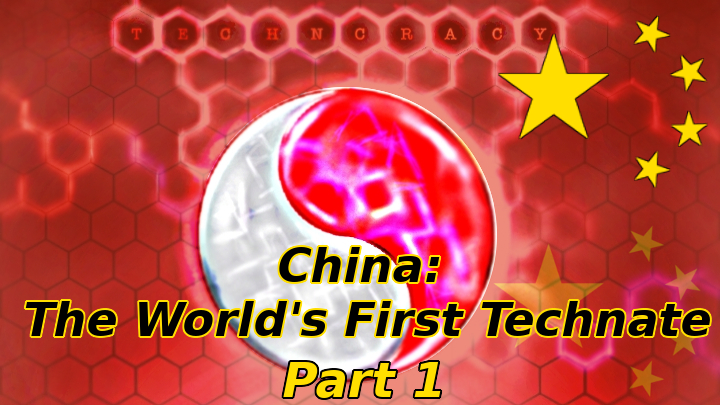



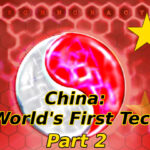
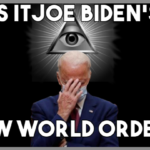


Thank you for this detailed article, and it is only part1!
P.S. Probably already superfluous and not for publication in the comments: Veblen mistyped as Veblan (not nitpicking, just to give no ammunition to the “fact-checkers”.
Many thank Peter. Corrected now.
Great article Iain, thank-you for this.
‘But we’re not China!’ is always the position of comfort most Westerners have. We are not, yet, but are for sure rushing through the technocratic systems already tested in China for many years.
I worked in one of the first technocratic areas/cities, dozens of trips from 2001 till 2017, in Shenzhen (area called the “Special Economic Zone” or SEZ). The gradual creep of authoritarian/technocratic systems seemed very abrupt from my Western viewpoint, having being dropped-in to it once or twice per year. In hindsight it was the propaganda that felt ‘off’, compared to the Western style (per Chomsky, Manufacturing Consent), in that it was so blatant and unrefined. The main billboard entering the SEZ stated: “EMPTY TALK ENDANGERS THE NATION, PRACTIAL WORK BRINGS PROSPERITY” (apparently the Chinese wording is more culturally-harsh and direct for locals).
A long-running narrative during our transfer of technology to China was that ‘evil China was stealing our IP and inventions’. Total fabrication – our contracts were two-way, to share the latest and greatest and get cheap labour costs in return. (I was involved in ‘sharing’ all the wireless development from 2G up to 5G over those 20 years). It got to the point quite quickly where China didn’t even need the West anyway. I made my career off building our wireless surveillance apparatus, I guess.
I look forward to your next articles on this. Curious to see parallels on how this was constructed to my experiences over 2001-2017. All of this is coming out more obvious to me as I see this roll out here in the West. ‘But we’re special – Westerners believe in liberty and freedom’. I can say that only 1 or 2 out of twenty of us visiting Shenzhen in those years felt something was ‘off’ – the rest thought it was a great society. That is, so long as we weren’t the lowly workers being controlled.
I went back and jotted down my notes on those visit years.
Not very well-referenced, but personal noted: https://technocracyfordummies.substack.com/p/digital-passports-and-social-credit?s=w
Thanks again for the articles.
DS
Thanks DS. Without giving the game away FDI is discussed in considerable detail on Part 2. Thanks so much for the link to your Substack
Interesting research Iain, the “energy certificates” are certainly being deployed today. Under Mao, China was a perfect test bed for Western technocracy.
The Great Leap Forward and the Cultural Revolution were indeed horrific events, not least but also not solely due to the terrible loss of life.. The Sino-Soviet split prompted by Stalin’s death began just before and straddled the Great Leap Forward and lasted well after the Cultural Revolution… Mao, it seems well-documented now, was a Harvard man. A chosen vehicle. How much did that influence the brutality of his policies? Why was he so keen on such rapid industrialisation? If he really was hell-bent on reducing China’s population, he certainly did a good job..And hadn’t close to the same thing already gone horribly wrong in Stalin’s Soviet Union? Many of the brutal policies of Stalin achieved similar results. To adapt an often used maxim: ‘If Stalin and Mao hadn’t existed, we would have had to invent them.’ Maybe the West did? For those two did a much better job at providing a ‘justifiable enemy’ than a less deranged leadership might have done. While the essentially conformist nature of Chinese society has always been envied by ghouls like Rockefeller et al and indeed latterly by Justin Castro Trudeau…
Thanks Fitzroy for a verry informative comment.
Dear Iain. Too few of us are able to understand the enormity of what is happening, it really is like we are living again in the times of Noah. If things continue who among us will be genetically unaltered?
Much more terrible is the meaning of Genesis 6:9
9 These [are] the generations of Noah: Noah [is] a righteous man; he *has been perfect among his generations* ; Noah has habitually walked with God.
Noah was not genetically altered.
His generational line was still intact. Today how many people have taken the injection? 5 billion or more…
I believe our creator will put an end to this evil.
I pray that I have the strength and soundness of mind to never consent to the mRNA…
Thank you for all your efforts to explain the situation we all are in
God bless
Very kind John. I don’t pray but I believe in humanity. We can turn this around and I hope you and yours prosper.
China is a shithole country due to the KP, but what you are writing here is fucking bullshit!
Thanks Jeff. Always a pleasure to read your insightful thoughts.
Great essay, thanks!
You’re most welcome.